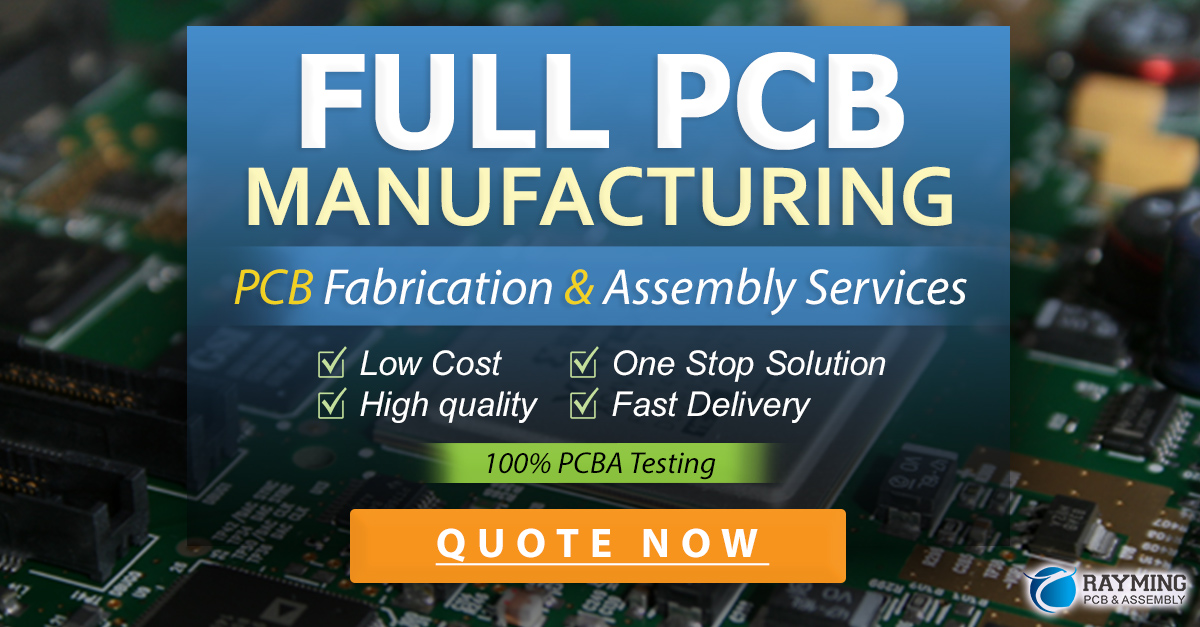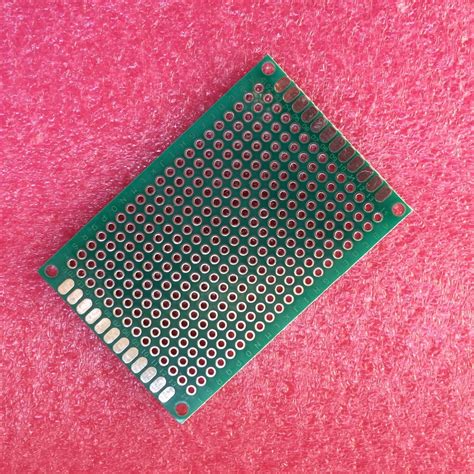What is a PCB prototype?
A PCB (printed circuit board) prototype is an early sample or model of a PCB used for testing and evaluations before mass production. PCB prototypes allow engineers to test the form, fit, and function of a new PCB design. They help verify the board layout, component placement, manufacturability, and electrical performance.
For industrial applications, PCB prototypes are especially important. Industrial electronics often have to withstand harsh operating conditions like extreme temperatures, vibration, moisture, and electromagnetic interference (EMI). Thorough prototyping and testing is required to ensure the reliability and robustness of the final product.
The Industrial PCB Prototyping Process
The process of creating an industrial PCB prototype typically involves the following steps:
1. Design and Layout
The first step is designing the schematic and layout of the PCB using electronic design automation (EDA) software. The schematic defines the electrical connections between components. The layout determines the physical placement of components and routing of copper traces on the board.
For industrial PCBs, the layout must be optimized for:
– Signal integrity – minimizing crosstalk and EMI
– Power integrity – providing clean power to all components
– Thermal management – dissipating heat effectively
– Mechanical strength – withstanding vibration and physical stress
2. DFM Analysis
Next, a design for manufacturability (DFM) analysis is performed on the PCB layout. DFM analysis checks the design against the capabilities and limitations of the PCB manufacturing process. It identifies potential issues that could affect the yield, reliability or cost of production.
Common DFM checks for industrial PCBs include:
– Minimum trace width and spacing
– Minimum drill hole size and annular ring
– Copper pour and thermal relief
– Solder mask and silkscreen clearance
– Panelization and tooling holes
3. Fabrication
After DFM signoff, the PCB design files are sent for fabrication. The fabrication process involves a series of steps:
- Printing the circuit pattern on a substrate material like FR-4
- Etching away excess copper to form traces and pads
- Drilling holes for vias and through-hole components
- Plating the holes with copper to provide electrical connection
- Applying solder mask to insulate the copper traces
- Adding silkscreen for text and component markings
- Surface finishing exposed copper with HASL, ENIG, OSP etc.
- Electrically testing for shorts and opens
- Cutting the panel into individual boards
For industrial PCBs, the choice of substrate material and surface finish are especially important factors. The substrate must provide the necessary electrical, thermal and mechanical properties for the application. The surface finish must protect the exposed copper from corrosion while enabling reliable soldering.
Some commonly used materials for industrial PCBs are:
| Substrate | Tg (°C) | Td (°C) | Dielectric Constant | Dissipation Factor |
|---|---|---|---|---|
| FR-4 | 130-140 | 300-340 | 4.5-4.7 @ 1 MHz | 0.02 @ 1 MHz |
| Polyimide | 250-270 | 450-500 | 3.5-3.8 @ 1 MHz | 0.005 @ 1 MHz |
| PTFE | 327 | 400 | 2.1 @ 10 GHz | 0.0004 @ 10 GHz |
| Ceramic | – | – | 6-10 @ 1 MHz | <0.001 @ 1 MHz |
Tg = Glass Transition Temperature, Td = Decomposition Temperature
4. Assembly
The fabricated PCB is then assembled with components to form the prototype. The assembly process involves:
- Applying solder paste to pads via stencil printing or dispensing
- Placing components on the pads using pick-and-place machines
- Reflowing the board in an oven to melt the solder and form joints
- Inspecting the assembled board for defects
- Programming firmware into microcontrollers and memories
- Functionally testing the board to verify operation
For industrial PCBs, the assembly process must pay special attention to:
– ESD protection to prevent damage to sensitive components
– Cleaning to remove flux residues that can cause corrosion
– Underfill and conformal coating to improve mechanical and environmental protection
– X-ray inspection to detect hidden defects like voids or shorts
5. Testing and Verification
The assembled PCB prototype must undergo various tests to verify its performance and reliability. Some common tests are:
| Test | Purpose |
|---|---|
| In-Circuit Test | Check for assembly defects and component failures |
| Functional Test | Verify the operation of the board against specs |
| Burn-In Test | Stress the board to identify early failures |
| Environmental Test | Check performance under temperature, humidity, shock |
| EMC/EMI Test | Measure electromagnetic emissions and susceptibility |
The specific tests required depend on the application and the industry standards that apply. For example, industrial PCBs used in automotive, aerospace, or medical devices have to meet stringent safety and reliability standards.
Benefits of Industrial PCB Prototyping
Investing time and effort in thorough PCB prototyping provides several benefits:
Risk Reduction
Prototyping allows identifying and fixing design issues early in the development cycle. This reduces the risk of costly failures and redesigns later in production.
Faster Time-to-Market
Parallel prototyping and testing of sub-systems accelerates the overall product development timeline. Modular designs enable concurrent engineering of different PCBs.
Improved Reliability
Rigorous testing of prototypes under actual operating conditions improves the reliability of the final product. Early detection of failure modes allows designing-in appropriate safeguards.
Cost Optimization
Prototyping provides an opportunity to optimize the PCB design for cost. Alternative components, materials, and processes can be evaluated for their impact on cost and performance.
Compliance with Standards
Testing prototypes against relevant industry standards ensures that the final product will meet all applicable safety, quality, and environmental regulations.

Challenges in Industrial PCB Prototyping
Realizing these benefits requires overcoming several challenges:
Complexity
Industrial PCBs often have high layer counts, fine pitch components, and controlled impedances. Prototyping such complex designs requires advanced manufacturing capabilities and expertise.
Long Lead Times
The specialized materials and processes used for industrial PCBs can have long lead times. This can delay the prototyping process and extend development timelines.
High Costs
The low volumes and high mix nature of prototypes make them expensive to manufacture. The use of exotic materials and finishes further adds to the cost.
Skillset
Designing and testing industrial PCBs requires knowledge of signal and power integrity, EMI/EMC, and reliability engineering. Such skills may not be readily available in all organizations.
Changing Requirements
The requirements for industrial products can change during the development cycle due to evolving customer needs or regulatory changes. This may necessitate redesign and re-prototyping, adding time and cost.
Best Practices for Industrial PCB Prototyping
To overcome these challenges and realize the benefits of prototyping, here are some best practices:
1. Define Clear Requirements
Establish clear and complete requirements for the PCB upfront. This includes functional, electrical, mechanical, environmental, and regulatory specifications.
2. Choose the Right Partner
Select a PCB prototyping partner with experience in industrial applications. They should have the necessary certifications, equipment, and processes to meet your quality and reliability needs.
3. Communicate Effectively
Provide complete and accurate design files and documentation to your prototyping partner. Be available to answer their questions and provide timely feedback.
4. Plan for Testing
Develop a comprehensive test plan covering all aspects of the PCB’s performance. Identify the required test equipment, fixtures, and resources. Allow sufficient time for testing and debugging.
5. Leverage Automation
Use EDA tools to automate design, analysis, and testing tasks. Automated optical and X-ray inspection can speed up defect detection.
6. Design for Manufacturability
Follow DFM guidelines provided by your manufacturing partner. Use standard materials, components, and processes where possible to reduce cost and lead time.
7. Optimize the Supply Chain
Work with your partners to optimize the supply chain for prototypes. Consider stocking long lead-time items. Establish clear order and delivery processes.
8. Document and Archive
Maintain detailed documentation of the prototyping process, including design files, BOM, test reports, and issues log. Archive this information for future reference and continuous improvement.
FAQ
1. How long does it take to prototype an industrial PCB?
The lead time for industrial PCB prototypes can vary from a few days to several weeks depending on the complexity of the design, the materials used, and the testing required. Rushing the process can compromise quality and reliability.
2. How much does it cost to prototype an industrial PCB?
The cost of industrial PCB prototypes can range from a few hundred to several thousand dollars based on the size, layer count, components, and quantities. Higher layer counts, finer pitches, and special materials increase the cost.
3. What are the most common defects in industrial PCB prototypes?
Some of the most common defects found in industrial PCB prototypes are:
– Solder bridges, opens, or shorts
– Component misalignment or tombstoning
– Incorrect or missing components
– Damaged or lifted pads and traces
– Delamination or warping of the board
– Electromagnetic interference or compatibility issues
4. How can I reduce the cost of industrial PCB prototypes?
Some ways to reduce the cost of prototypes are:
– Use standard materials, components, and processes
– Minimize the layer count and size of the board
– Panelize multiple designs to amortize tooling costs
– Order in economical quantities based on supplier recommendations
– Negotiate volume discounts or blanket orders with suppliers
5. What certifications are important for industrial PCB prototyping?
Some key certifications to look for in a prototyping partner are:
– ISO 9001 for quality management systems
– AS9100 for aerospace and defense applications
– IATF 16949 for automotive applications
– ISO 13485 for medical devices
– IPC 6012 for rigid PCBs and IPC 6013 for flexible PCBs
– NADCAP for special processes like plating and soldering
Conclusion
Industrial PCB prototyping is a critical step in the development of robust and reliable electronic products. It involves a complex interplay of design, manufacturing, and testing activities. Effective prototyping requires close collaboration between the product development team and the prototyping partners.
By following best practices and leveraging the right tools and expertise, organizations can overcome the challenges of industrial PCB prototyping. The benefits in terms of risk reduction, time-to-market, reliability, and cost optimization make the investment well worth it.
As the complexity and performance demands of industrial electronics continue to increase, the importance of thorough prototyping will only grow. Organizations that can master the art of industrial PCB prototyping will be well-positioned to innovate and succeed in this dynamic market.






Leave a Reply